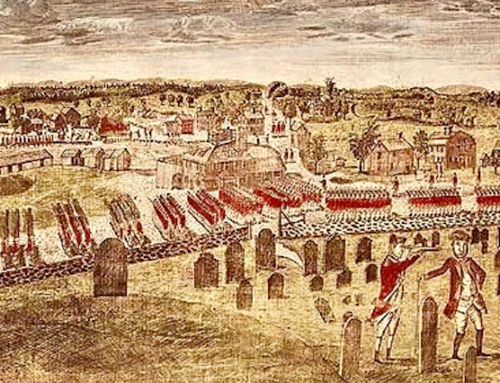Portraying the souls of the faithful and those of the damned, “The Last Judgement” of Michelangelo serves as a powerful reminder of the theology of grace and of the importance of one’s own volition in accepting and actively cooperating with the grace which God so freely gives to men.
When I was young, my parents would bring my siblings and me to the various museums in New York City such as the Metropolitan Museum of Art and the Cloisters. For the most part, I was disinterested in the art as I would rather be immersed in worlds into which my books would carry me. Yet, over the years, this changed. I began to develop an appreciation for art as I soon discovered its rich treasures: Art, similar to a good book, unlocks a whole world of mystery and beauty. It allows its spectators to enter the thoughts of the artist by viewing the subject of the artwork from the artist’s perspective. In this way, good art inspires a new and deeper understanding of the subject conveyed and leaves observers to marvel at its beauty.
Sacred art has this effect on men. This is why St. John Paul II proclaimed in his Letter to Artists that the Church needs art and art needs the Church. Sacred art captivates men’s minds, drawing them into a transcendence of divine realities. This is especially seen in the genius of Michelangelo’s Last Judgment for the artist provides subtle didactic hints throughout the piece which draw observers into a deeper understanding of the mysteries of the Faith. In his art, Michelangelo provides a rich understanding of the theology of grace.
Grace is a gift from God. If accepted, it is the means to sharing in God’s divine life. When St. Thomas Aquinas speaks about grace, he does so in the context that grace prepares and aids men in fulfilling their supernatural end. Men cannot attain Heaven without grace, even though men by nature desire the good. Therefore, men need grace to achieve the supernatural good.
On their own, men perform certain tasks aimed at a natural good without the aid of grace, but they cannot attain Heaven without this supernatural gift. In his Summa Theologica, Aquinas quotes Augustine saying that “without grace [men] cannot merit everlasting life; yet [they] can perform works conducing to a good which is natural to [men], as ‘to toil in the fields, to drink, to eat, or to have friends.’” Men need grace to elevate their natural desires for good to those which strive for supernatural goods and prepare their souls in choosing it. Aquinas draws upon Augustine’s writings to illustrate this: “[men], by [their] will[s] do work meritorious of everlasting life; but as Augustine says, in the same book, for this is necessary that the will[s] of [men] should be prepared with grace by God.” Thus, the fact that men desire and strive to live virtuously stems from their acceptance of God’s grace to do so.
In addition to grace as that which elevates men’s dispositions to do good, directing them towards a higher goal, Aquinas speaks of grace as that which perfects nature. Grace does not limit or destroy nature, but builds upon it. God bestows grace to men throughout their lives. Yet, men must accept what God so readily and graciously extends. Thus, free will plays a vital role in attaining Heaven.
Michelangelo beautifully demonstrates this correlation between grace and free will in his Last Judgement. In the lower righthand section of the painting, Michelangelo shows souls rising from their graves. He makes a notable distinction between the righteous and the damned souls. The righteous souls gaze towards Heaven. Their acceptance of grace has elevated and deepened their inclination for the good and has directed them towards Christ, who is their ultimate end. Consequently, their receptivity to partaking in the gift of God’s divine life on earth permits God’s grace to draw and carry them to Heaven’s heights where they will experience the fullness of divine intimacy. Michelangelo displays how the just souls’ focus on attaining their heavenly goal enables them to willingly endure all on earth for the glory of eternal beatitude. The artist reveals this through the saints in Heaven, most particularly the martyrs, who hold the instruments of their passion as a triumphant reminder of the power of God’s grace in their lives. This grace enabled the martyrs to overcome fear of physical death and endure rejection, suffering, and death for the sake of Christ, their heart’s desire, whom they now possess.
In sharp contrast, the souls of the damned lie helpless on the ground, looking anywhere but upward. Michelangelo depicts how these souls lived their lives on earth. Their shame causes them to cast their eyes downward, to the earth which they inordinately loved and where they pursued fleeting pleasures. During their lives, these souls were oppressed by their disordered attachments to their material comforts and sins. They repeatedly rejected God’s invitation to seek the supernatural good. Their daily refusal of God’s grace, manifested through their actions, ultimately causes their own destruction and so their apathy and indifference carry them to the pits of hell.
Thus, the body language of these resurrecting souls and the destination of their ultimate end reveal that men should not be complacent or apathetic in the pursuit of holiness. Each day requires men’s receptivity to God’s grace working in their souls. Only by accepting God’s divine gift can men actively pursue and attain a life of virtue, for God’s grace enables men to overcome vices or imperfections, live a moral life, and perform good works. When men allow God’s grace to work within them, it has both a beautiful and powerful effect, for grace transcends men. In The Way to Christ: Spiritual Exercises, St. John Paul II speaks of grace as “an energy—a force which tends to keep [men] close to God and to transform [them] inwardly, ennobling [them].” Michelangelo’s ascending souls convey this reality: Their acceptance and dependence upon God’s grace allows them to experience an intimate union with God and by this grace, as St. Paul reminds, they are saved through Faith (Ephesians 2:8).
Yet practically speaking, men experience obstacles in the attainment of the supernatural good as demonstrated through the souls of the damned. Their desire to obtain the good becomes stagnant and marred as they succumb to the desires for material happiness, become complacent in their sins and indifferent toward achieving their true end. God’s grace cast aside, which if accepted would have transformed men, now serves as their condemnation. Christ reminds those souls of the missed opportunities for grace at the Last Judgement: “for I was hungry, and you gave me no food, I was thirsty and you gave me no drink, I was a stranger and you did not welcome me, naked and you did not clothe me, sick and in prison and you did not visit me” (Mt. 25: 42-44). The drama of men’s inner struggles in pursuing the ultimate good unfolds in Michelangelo’s masterpiece through the portrayal of demons physically dragging men to Hell while angels work to liberate these souls from the demons’ grasp by pulling them to Heaven.
As sin weakens and destroys the life of grace in the soul, men must always aspire to be in the state of grace for God’s grace prepares men to accept and act upon His grace in attaining the supernatural good. By actively cooperating with this divine gift, men strive for perfection in imitation of the Father, knowing that apart from God they can do nothing in achieving holiness.
Aquinas, however, also emphasizes the importance of one’s volition in this process as men must actively cooperate with God’s grace. The Angelic Doctor therefore notes that the power in becoming a saint lies in the will, for through the daily acceptance of God’s grace and choice to pursue virtue, men overcome a sense of complacency and grow in a deeper friendship with God.
Men, however, do not accomplish this journey alone as indicated by the ascent of the righteous souls. Michelangelo paints these souls either being lifted to Heaven by angels or rising with outstretched arms to signify men’s total dependence upon God’s grace in seeking perfection. In turn, angels and saints extend their hands to pull these souls to their heavenly home. By portraying these souls being carried or “climbing” into Heaven primarily through the efforts of others, Michelangelo hints that intercessory prayer, encouragement, and the good example of others are means by which God aids men in their journey to eternal beatitude.
The aid given to the ascending souls reveals two further points: First, God has placed people on others’ paths to help them achieve their ultimate end; second, it speaks to the importance of friendships. Since all are in statu via, a journey toward perfection together, every person is a pilgrim and a travelling companion of the other. Though each person’s journey differs, men share the same destination: Heaven. Thus, the path to heaven is not meant to be solitary. God created men to journey together, giving and receiving help. Friendship then plays a vital role in life’s journey, as friends should inspire, encourage, and aid each other on their earthly pilgrimage.
Michelangelo further speaks of the theology of grace by demonstrating the power of the sacraments and of prayer in The Last Judgement. The faithful rely on the power of the sacraments and of prayer in their ascent to eternal beatitude. God extends His grace to men through the sacraments, the primary vehicle of grace. The Italian artist conveys this by depicting a priest imparting a final benediction on a dying soul in the righthand corner of this dramatic scene. In another section, Michelangelo portrays an angel pulling two people tied together heavenward by means of the rosary. Thus, for Michelangelo, the reception of the sacraments and the commitment to a life of prayer are integral to entering Heaven.
Because the righteous souls accepted and remained receptive to God’s grace in their lives by “fighting the good fight,” there is much jubilation in Heaven, for they attained the ultimate Good for which they strove on earth. Michelangelo starkly contrasts this with the terror of those in hell, who consistently rejected God’s grace on earth, and so forever will be tortured in both body and soul, knowing that their own obstinate refusal of God’s gifts dragged them to their demise. Thus, The Last Judgement of Michelangelo serves as a powerful reminder of the daily struggle to attain heaven, of the theology of grace, and of the importance of one’s own volition in accepting and actively cooperating with the grace which God so freely gives to men.
This essay was first published here in August 2020.
The Imaginative Conservative applies the principle of appreciation to the discussion of culture and politics—we approach dialogue with magnanimity rather than with mere civility. Will you help us remain a refreshing oasis in the increasingly contentious arena of modern discourse? Please consider donating now.
The featured image is a detail of The Last Judgment (1536–1541) by Michelangelo (1475–1564) and is in the public domain, courtesy of Wikimedia Commons.








Thank you, Maria. Your essay is so beautiful and gives me strength and clarity to face reality on this earth for the time I am here. I don’t think it is always easy to spot the grace that God is sending our way, but I also think that a good prayer life can make us more susceptible to it. So happy that God put me in the path of your writing.
Excellent essay.
Should be a homily.
I appreciate Cintorino’s intelligent discussion, using just one painting, of the power of theology-through-art which empowered the Catholic Counter-Reformation. God created beauty for man’s benefit, both as the psychological embodiment and physical picture of His good creation and as an inspiration for man to worship God. Man creates beauty in art and architecture to praise God.